Chelsea 2022: bees, celebrity, design
Tuesday 24 May 2022
It’s all about the bees, right? Attracting our pollinator friends is a high priority on the contemporary gardener’s list. One is tempted to cry, “Bees are dead, long live bees!” because we know their numbers are threatened by pesticides, pollution and climate change.
Luckily, even the bees were attracted by the floriferous displays both at the entrance to the Royal Hospital grounds as well as the Great Pavilion. No wonder, then, that one of the dominating themes at RHS Chelsea this year was the B word – biodiversity – and its faithful companion sustainability. Not surprisingly, therefore, was the ubiquitous combination of edible and decorative plants: out with annuals and in with perennials; crop rotation, rewilding, community, well-being and mental health were themes that featured in a large swathe of stands as well as in the showcase gardens.
As a fresher on a damp early morning (in contrast to the rest of this MPG group of multiple-timers), I initially felt lost but luckily my instincts led me straight to first-time exhibitors Urquhart & Hunt’s A Rewilding Britain Landscape which was simply spectacular in its unassuming simulation of nature, complete with little wooden lodge, West Country stone wall and a feat of animal engineering in a recreation of beaver dams of coppiced trees mixed with mud and plants. This garden evoked childhood memories of Brian Winston, a family friend, who used to read us the Wind in the Willows using different accents for each animal.
Of all the gardens and displays this was the least artificial, with planting so varied and ingeniously juxtaposed that it not only looked beautiful but reincarnated a slice of nature with its self-cleaning rock pools staggered to avert flooding and soil erosion. The garden was judged RHS Best Show Garden 2022. No small feat. I almost wished I hadn’t stopped here first, as nothing later matched the level of naturalistic planting of the landscape design duo, specialists in ecological restoration.
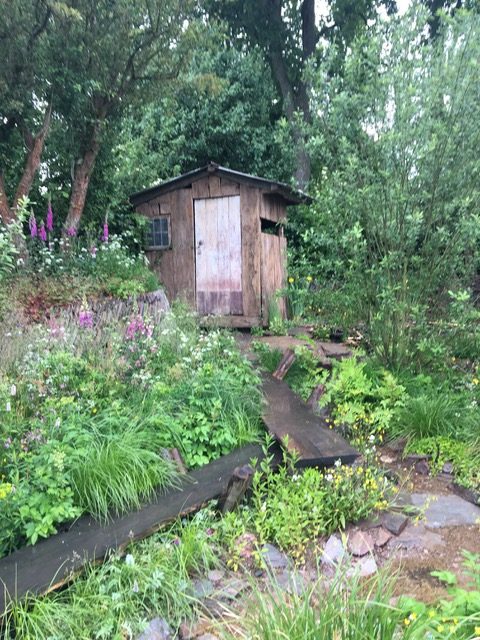
A Rewilding Britain Landscape garden
Having survived living in one of the busiest urban concentrations in the capital for the best part of three decades, this type of design appeals to my desire to escape the prison-like enclosure of bricks and mortar and this is why my front garden patch is so vital, a concept that was picked up by another collaboration between a Hackney-based mental health charity Core Arts and garden designer named, appropriately, Front Garden Revolution.
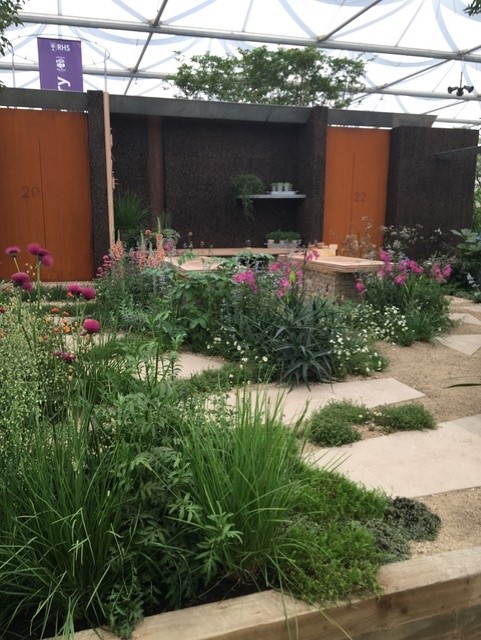
Front Garden Revolution
Here Andy Smith-Williams used a mixture of perennials, trees, shrubs, crack fillers, grasses, edibles, wildflowers, native hedging, ferns and succulents. Hard landscaping consisted of re-used paving stones creating permeable pathways, while a rain-collecting system in galvanised steel ran along the parapet of a cork-lined façade and cascaded onto a spout with a chain abutting a planter holding water-loving plants. The idea was for front gardens to act as bridges for sociability and cementing community through communal gardening.
Turning to the Textile Garden, another upheaval was taking place, this time in fashion. Designer Lottie Dalamain and awareness campaign Fashion Revolution collaborated to make an aesthetically pleasing and inspiring garden around plant-based dyes and fibres, from the common nettle to marigolds, fennel, madder, comfrey and more, all arranged in a helpful horticultural colour chart. Lottie showcased a linen dress dyed in a pale yellow worn under a silk floral dust jacket: you can grow then dye your own demonstration fabric as indicated here with dark tiles representing seams between the colour coded squares of species/potential dyes.
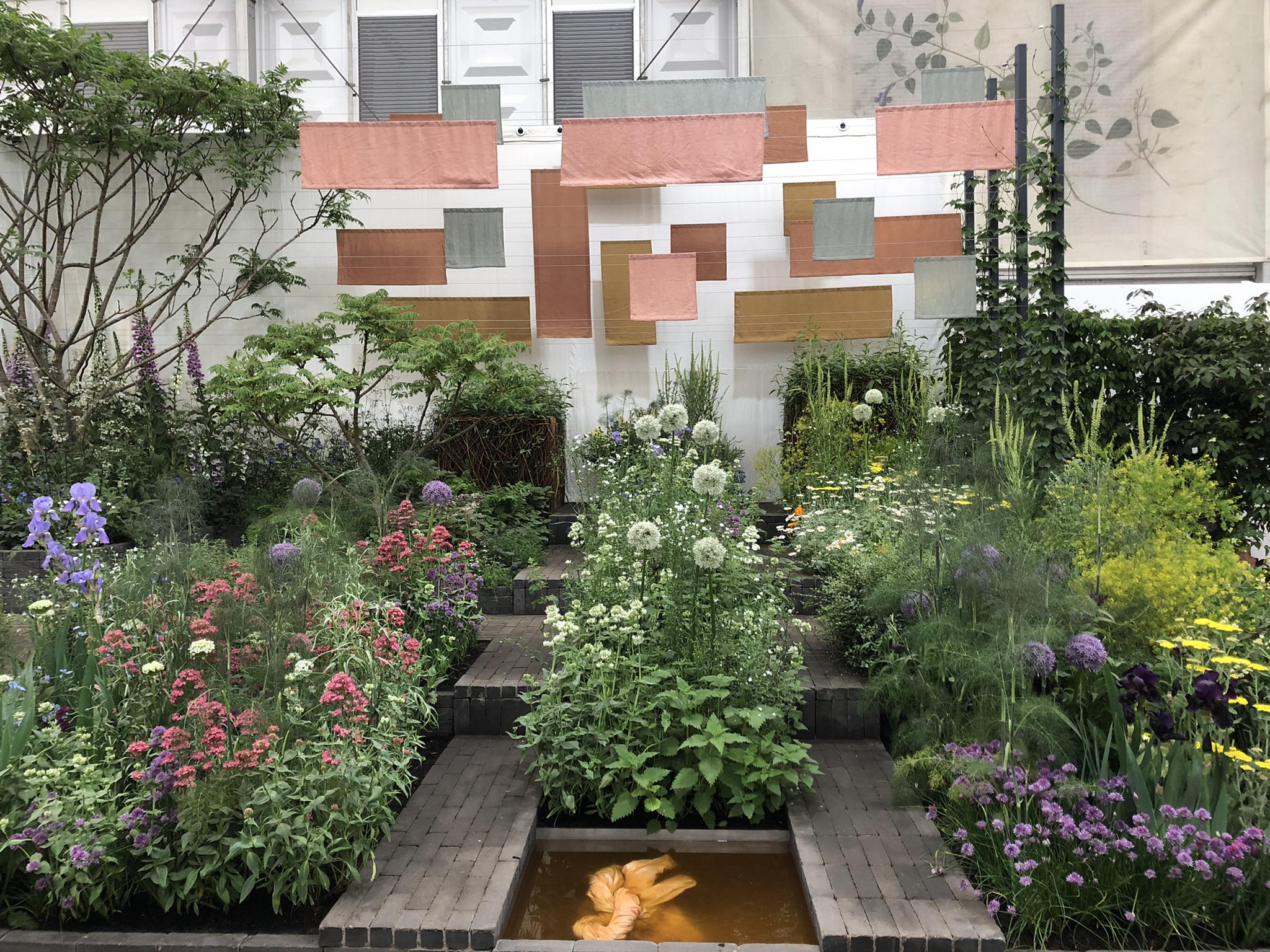
A Textile Garden for Fashion Revolution
Elsewhere I noticed the propensity of other common, native and pollinator-attractive specimens such as Valeriana officinalis which grows in my own patch. One display in the Pavilion boasted a project working with Special Educational Needs children in schools where, alongside edible flowers, vegetables and an enviable expanse of chamomile lawn (the manicured English lawn, dear friends, has seen its final days), wild plants are actually celebrated. Although, I hasten to add, there wasn’t a filament of bindweed in sight.

Special Educational Needs garden
Other themes I was drawn to were conservation and heritage. Saving Seed, for instance, is a fascinating project based in North London where Jo La Preserveuse demonstrates how to collect and use seeds (pickled rocket anyone?). Plant Heritage encourages the public to form national plant collections. Among their takers are Aruncus, Campanula, Silene and Vinca. For others see www.plantheritage.co.uk.
Thus far my bias is all but apparent, I am a re-wilder at heart but here is a confession: I stopped, gawped, admired and was even tempted to purchase one of those delectable bonsai trees. Derbyshire Bonsai’s stand was particularly jaw-dropping with its decades-old miniature Japanese maples, complete with a diminutive scroll hanging in the background.
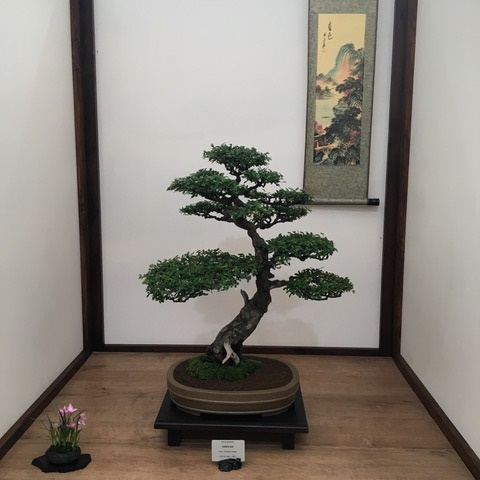
Bonsai
The two stallholders were decrying a customer who had managed to kill off 17 of her bonsais by keeping them in her airing cupboard. Although I wouldn’t inflict such a premature death on any plant, I can’t guarantee that my propensity to over-water indoor plants wouldn’t overspill on these delicate creatures.
There was little pertaining specifically to Mediterranean habitats. In the Balcony and Container section there was a Mediterranean Reflection consisting more of a Zen Buddhist pebble ground with a minimalist/brutalist curved bench and concrete containers with the odd plant. By contrast, issuing directly from Crete via East Yorkshire, the Terracotta Pot Company presented some majestic planters made by the master potter Adonis and his small team. Ingeniously, the suppliers had covered a couple of pots with leather seats and created a table by inserting an MDF circle around an enormous pot—apparently Adonis himself was impressed.
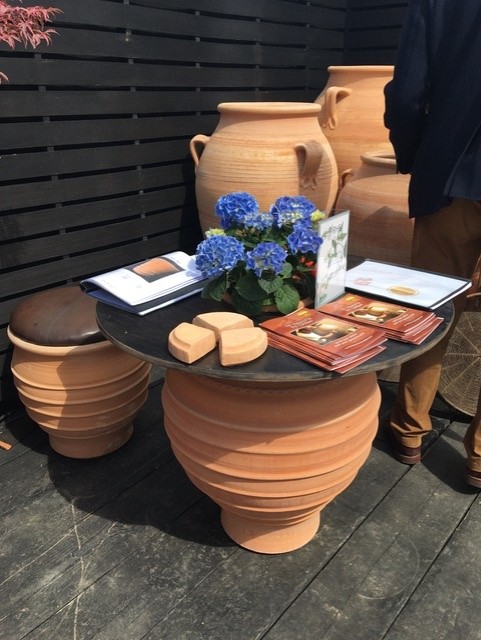
Adonis pots
Text: Cleo Cantone
Images: Cleo Cantone and Sharon Horder

